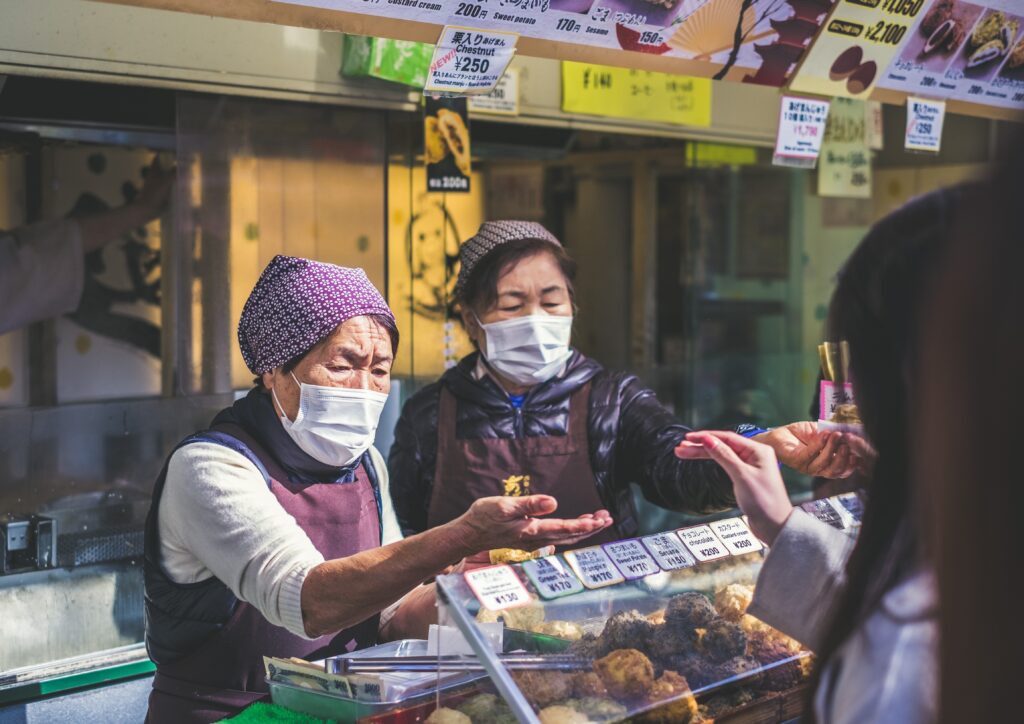Saanvi Nayar recommends "Foodie Pharmacology" for its insightful discussion of the cookbook "Plantology," on how adopting a plant-based diet can revolutionize our health and tackle chronic diseases, proving that food truly is medicine

Americans suffer different rates of illness and disease due to healthcare disparities, and the COVID-19 pandemic has only made this worse.
By: Jocelyn Spizman
Healthcare disparities are the varying burdens of disease and illness due to differential socio-economic group’s access to healthcare providers, insurance, quality of care, and mistrust in their providers’ care.
The COVID-19 pandemic has only exacerbated pre-existing healthcare disparities. An Emory University Rollins School of Public Health study has re-evaluated the pervasive differences in healthcare across racial and ethnic groups soon after the COVID-19 pandemic hit the United States; even before any symptoms or reason to suspect infection, members of Hispanic and non-Hispanic Black populations predict higher rates of their own infection.[4] This differential suspicion of infection by racial and ethnic group reflects the reality of incongruity of infection rates between racial and ethnic groups; the pattern found in the study is not only valid and supported in terms of real COVID-19 infections, but also reflects the United States’ social and cultural divides that created these disparities within the healthcare industry.
The study “Similarities and Differences in COVID-19 Awareness, Concern, and Symptoms by Race and Ethnicity in the United States: Cross-Sectional Survey”, led by Dr. Jeb Jones (PhD, MPH, MS) faculty at the Department of Epidemiology at Rollins School of Public Health, published in the Journal of Medical Internet Research, used surveys of social media users to uncover whether they believed they were infected with COVID-19 and their knowledge on transmission of the virus.[3,4] The public health cross-sectional study, reporting an overview census of data from one point in time, searched for indicators at the end of March 2020 of COVID-19 racial and ethnic group healthcare.[4] The web-based survey asked about knowledge on the current number of national and international COVID-19 infections, knowledge on modes of dissemination, symptoms the participants had, and if they suspected they may be infected.[4]

Social Determinants of Infection
Dr. Jeb Jones explained his hypothesis on where the disparities comes from, “There’s issues of having to go to work, there’s issues of multi-generational housing and crowding, and also just the current disparities.”
Jones is detailing three social determinants that are contributing to the major disparity in COVID-19 infection rates. People with lower socio-economic status are more likely to work jobs deemed essential throughout the pandemic, and often in jobs that put them in contact with many people every day. Furthermore, these workers tend to live in highly compacted housing which contributes to more exposures and higher risks because of more people present at home.
Due to the pre-pandemic health gap and higher rate of pre-existing conditions for lower socio-economic families, they are at a greater risk of vulnerability to mortality or morbidity from COVID-19. Lastly, the real gaps in infection rates between non-Hispanic Black populations and Hispanics and other racial and ethnic groups make these groups more likely to suspect potential infections because they are more likely to live around and hear of other COVID-19 infections in their communities.
Rather than taking a purely epidemiological approach, their question investigating suspicion of infection detected the sociological phenomenon of healthcare disparities. The study’s results reflect the nation’s reality; racially-based health disparities existed before and throughout the pandemic contributing to higher rates of COVID-19 morbidity and mortality for lower socio-economic classes including non-white Hispanics and non-Hispanic Black Americans.[5]

Yet this study is not unequivocal; the authors distributed the survey on Facebook, Instagram and Twitter. Reflecting who uses social media, the average age of the groups who responded was 33. With a higher response-rate from White non-Hispanic participants, midway through the study the researchers had to restrict the number of White participants to create a diverse sample. The average age of the White participants was 54 in contrast to the entire study’s average age of 33.[4] A potential confounding variable, this age gap could contribute to the disparities seen between racial and ethnic groups. Older generations could be more educated, able to control more of their exposures, or have more risk factors leading them to want to investigate and learn more about COVID-19.
Online surveys through social media has advantages as well; busy essential workers can easily complete the survey on their own time and at any location, there is privacy, anonymity, speedy results, less participant bias to respond in a way that would please the researchers, and there is no risk of infection through online means.
Jones’ study highlights why social determinants of infection are always important; regardless of supplies, scientific research, and new treatment developments, a major aspect of preventing the spread of COVID-19 relies on the general publics’ ability to socially distance, quarantine, and get tested routinely. Medical providers and public health organizations can target certain demographics (such as non-Hispanic Black Americans and Hispanics) to predict and prevent COVID-19 hotspots when primed with an understanding of socio-economically based gaps in healthcare.
Medical Mistrust & Covid-19
A pre-existing phenomenon called medical mistrust has been amplified due to growing healthcare disparities and diverging understandings of COVID-19; past studies show that historically discriminated against groups are less likely to trust healthcare providers and bio-medical science researchers due to a very real history of abuses.[1,5] Many non-Hispanic Black populations and Hispanic groups fall into this category of historically-instigated mistrust in the legitimacy of healthcare leaders within the pandemic.[1,5]
Dr. Jones calls for action as a result of this mistrust’s contamination with fake news on COVID-19: “Because the current data indicate that Black Americans are more likely to refuse a vaccine, and that goes exactly in line with existing medical mistrust.” Jones states, “We have a historic issue of racism in medicine and public health that have very rightfully engendered medical mistrust with respect to all kinds of medical outcomes, you have that already that then gets compounded by politics.”
Not only is COVID-19 disproportionately spreading through lower-socioeconomic groups, these groups are historically justified in their doubt in public health solutions. “In this case, I would say medical mistrust will apply very strongly with the adoption of vaccines,” said Dr. Ellen Idler, a professor of sociology and epidemiology at Emory University who was not involved with the study.[2] “There are people that are indifferent or outright hostile to vaccines because of not trusting.”
The importance of medical mistrust will only be amplified as new treatments or preventative measures such as a vaccine will become available to the public. We cannot forget to focus on the people spreading, sickened, and dying of the pandemic at hand even though the race for a treatment and scientific knowledge against COVID-19 is of high significance. Jones’ publication foreshadows the disharmony of the American people in the coming months. We can see the future implications that will be left in wake of the virus by focusing on the epidemiological and sociological implications of the pandemic. As a public health necessity, we must address this socio-cultural mistrust in the healthcare industry and have a unified stance to effectively care for all Americans and close the socio-economic gap in health disparities.
References:
- Arnett, M. J., Thorpe, R. J., Gaskin, D. J., Bowie, J. V., & Laveist, T. A. (2016). Race, Medical Mistrust, and Segregation in Primary Care as Usual Source of Care: Findings from the Exploring Health Disparities in Integrated Communities Study. Journal of Urban Health,93(3), 456-467. doi:10.1007/s11524-016-0054-9Idler, E. L. (n.d.).
- Ellen L. Idler. Retrieved October 14, 2020, from http://sociology.emory.edu/home/people/faculty/idler-ellen.htmlJones, J. (n.d.).
- Rollins School of Public Health – Jeb Jones. Retrieved October 14, 2020, from https://sph.emory.edu/faculty/profile/index.php?FID=jeb-jones-6144
- Jones, J., Sullivan, P. S., Sanchez, T. H., Guest, J. L., Hall, E. W., Luisi, N., . . . Siegler, A. J. (2020). Similarities and Differences in COVID-19 Awareness, Concern, and Symptoms by Race and Ethnicity in the United States: Cross-Sectional Survey. Journal of Medical Internet Research,22(7). doi:10.2196/20001
- Thomas, S. B., PhD, & Casper, E., MA. (2019). The Burdens of Race and History on Black People’s Health 400 Years After Jamestown. American Public Health Association. Retrieved October 14, 2020.


